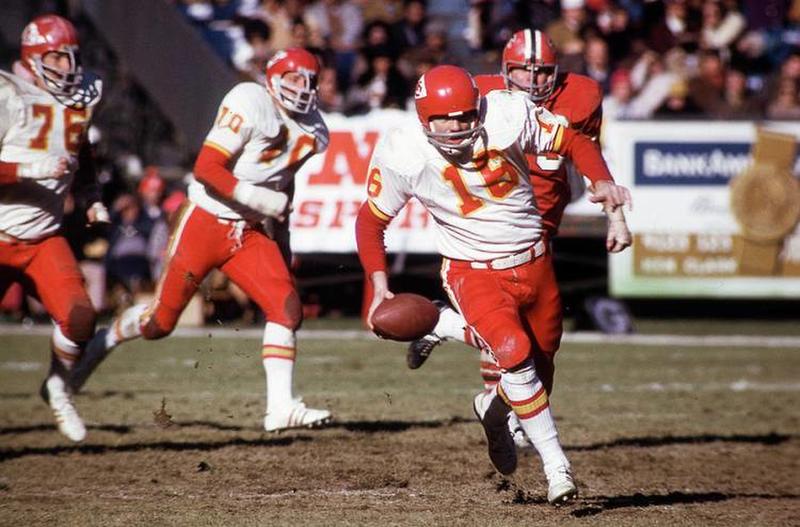
Many might recognize Len Dawson from his notorious photo of him enjoying a soft drink and smoking a cigarette during the halftime of Super Bowl I. But while that image be bizarre in regards to today's societal standards, it was nothing but a regular championship Sunday halftime for those playing and those watching during Dawson's era of pro football. While that image might be ingrained into the heads of many, Dawson was one of the greatest competitors of his era. Hailing from Alliance, Ohio, Dawson played his college ball at Purdue University for three seasons, throwing over 3,000 and leading the Big Ten Conference. Dawson also served as the team's kicker and played on the defensive side of the ball as well.
After becoming a dominant force in the Big Ten Conference, Len Dawson was drafted 5th overall in the 1957 NFL Draft by the Pittsburgh Steelers. However, Dawson was unable to become a staple quarterback with the team after the Steelers acquired the more established Bobby Layne in 1958. From 1960 to 1961, Lawson spent a short time with the Cleveland Browns before finding a home with the Dallas Texans/Kansas City Chiefs where he would earn his keep as a Hall of Fame quarterback. In his first season with the team, Dawson would be named AFL MVP after leading the league in touchdowns. Dawson would also lead the Texans/Chiefs to three AFL Championships (1962, 1966, and 1969) while racking up six AFL All-Star honors. Dawson also participated in the first-ever Super Bowl but fell short to the Green Bay Packers. Three years later, Dawson led the Chiefs to a Super Bowl victory in Super Bowl IV over the Minnesota Vikings where he was also named Super Bowl MVP for his performance.
Most of your favorite celebrities either studied acting in college or went straight from high school into a life of the arts. But, hey, not all of them. Some celebrities actually have advanced college degrees.
Turns out Mayim Bialik is just as much of a genius as the one she plays on The Big Bang Theory. She earned her Ph.D. in neuroscience from the University of California, Los Angeles, focusing on obsessive compulsive disorder among people with Prader-Willi syndrome, a rare condition in which the hypothalamus malfunctions.
Little known fact: Natalie Portman skipped the premiere of Star Wars: Phantom Menace because she was studying for her high school exams. She had two papers published in scientific journals while she was still in high school, and graduated from Harvard University with a B.A. in Psychology.
Before he was looking for answers on X-Files, David Duchovny was just trying to find the answers for English finals at Princeton University90. David graduated from Princeton in 1982 with a B.A in English. He continued to feed his love of literature by receiving a master’s degree in English Literature at Yale University. David was an excellent writer and poet. His work consistently received praise by his fellow classmates and teachers at Yale. His writing was even nominated for a college prize by the Academy of American Poets.
Sigourney Weaver graduated from Stanford University in 1971 with a bachelor’s in Literature. It was while studying at Stanford that Sigourney realized her true passion in life was to become an actress. Shortly after graduation, she attended Yale for their well-known drama program. She would go on to receive a master’s in Acting from Yale University and become friends with fellow famous actress Meryl Streep.
Meryl Streep is considered one of the most successful actresses of all time. She is also one of the most highly educated. Before collecting an array of Oscars, Meryl collected diplomas. She graduated from Vassar College with a B.A. in 1971. Meryl has a habit of being unsatisfied with impressive accomplishments as her acting career has shown, so she attended Yale University and earned a master’s degree in Acting.